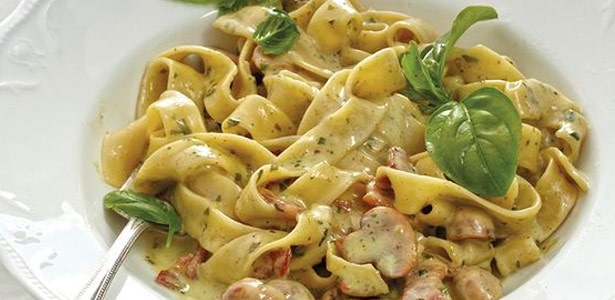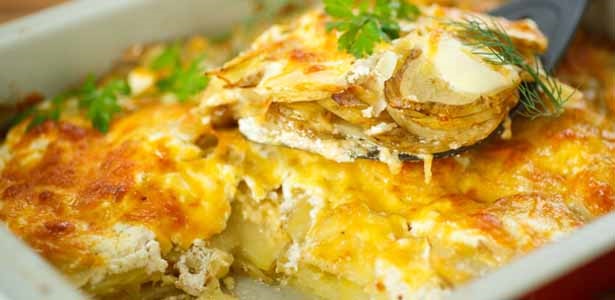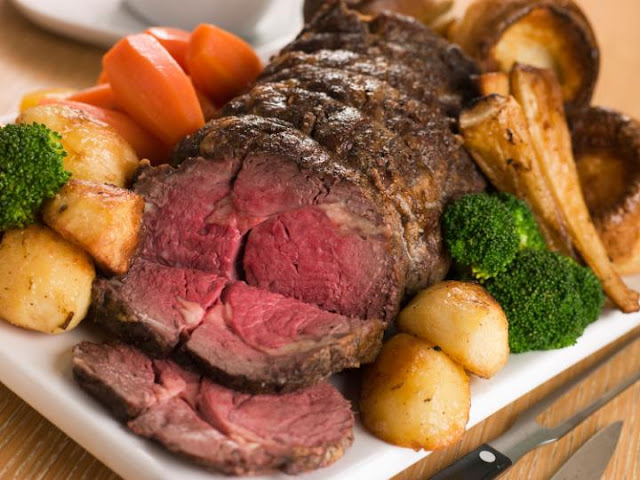That time when everyone visiting Spain was eager to try
local classics such as paella, sangria or tortilla Espanola seems long gone.
Nowadays, more and more travelers want to get a true taste of Spanish cuisine
with all the regional specialties, century-old traditions and Middle-Eastern
influences that define it. And given the fact that Spain is such an incredible
source of unique flavors, it would be an enormous shame not to enjoy them while
here.
To get you started, we’ve rounded up a list of delicious
Spanish foods that you should sample on your next trip to the beautiful Iberian
country.
1. Pulpo a la Gallega (Galician octopus)
Commonly known as Polbo a Feira or Pulpo a la Gallega
(Spanish), Galicia’s signature dish is as hearty and delightful as the region
itself. Therefore, if you have the chance to visit this picturesque green
corner of Spain, which is widely known for its amazing seafood, you should
certainly try the delicious paprika-flavored Galician octopus, be it in a tapas
bar, a fancy restaurant or a traditional pulperia (octopus restaurant), where
they still serve it on rough wooden plates.
The origin of Pulpo a la Gallega dates back some 125 years,
when during the cattle fairs, muleteers used to bring their own octopus and
cook it with olive oil and lots of paprika. That’s how the Galician octopus
became a typical fair dish, hence the name Pulpo a la Feria (Polbo á Feira).
For an extraordinary experience, don’t miss the Octopus
Festival held each August in O Carballiño, Ourense.
2. Gazpacho
There’s no doubt Gazpacho, the famous Andalusian cold soup,
has already toured the world in various shapes and colors, but those who’ve
tasted it know that it is nowhere as delicious and fresh as here, in the
fascinating south of Spain.
Traditionally served in summer, the classic Gazpacho Andaluz
is a delicious and refreshing tomato soup usually made of tomato, cucumber,
onion, stale bread, olive oil, wine vinegar, garlic, salt and pepper. Depending
on the area of origin, it can be served with croutons, chopped vegetables, ice
cubes and even ham.
Each August, the small town of Alfarnatejo, near Malaga,
plays host to a delightful Gazpacho Festival where visitors have the chance to
indulge in the iconic Andalusian dish and to cheer up with a traditional
flamenco show.
3. Jamon
Giant legs of jamon hanging in a local tapas bar is among
the images that come to mind when you think of Spain, but what many don’t know
is that the land of bullfights and flamenco is also the world’s number one
producer (and consumer) of dry-cured ham in the world.
One of the country’s most treasured foods and a highly
prized produce all over the world, the Spanish jamon is still made using
century-old techniques and labeled according to the pigs’ breed and diet.
Theoretically, Spain boasts two different types of cured ham – Jamon Serrano
and Jamon Iberico, but in reality there are many variations available
throughout the country.
Also known as Jamon Reserva or Jamon Curado, the famous
Jamon Serrano is a dry-cured ham usually made in the Spanish sierras form
various breeds of white pigs, including Landrace, Duroc or Large White. The
exquisite Jamon Iberico, however, is a different story. Arguably the greatest
ham in the world, this ancient delicacy is made exclusively from black Iberian
pigs that roam freely on the picturesque oak pastures of southwestern Spain.
The process is both elaborate and very rigorous, and lasts for at least three
years. From the finest to the most common, Jamon Iberico is categorized as
follows: Jamon Iberico de Bellota, Jamón Iberico de Recebo, Jamón Ibérico Cebo
de Campo, Jamón Ibérico de Cebo.
4. Chorizo
Whether cured, smoked or fresh, chorizo is made and eaten
all over Spain. It is an utterly delicious pork sausage with lots of garlic and
pimentón (Spanish smoked paprika), and also the nation’s most versatile food,
so it’s no surprise the entire world has gone mad about it.
The Spanish chorizo can be sweet or spicy, served raw as a
tapa or added in various dishes. Some of the most important types include
Chorizo Zamorano – a variety made in Castile and Leon and protected by a Marca
de Garantia; the sweet Chorizo de Pamplona; Chorizo Riojano, which is protected
by PGI; Chorizo Patatero (made with potatoes); Chorizo Canario (typical to the
Canary Islands, with a consistency similar with that of French pate); and those
made in the province of Salamanca. The finest smoked varieties can be found in
Asturias, Galicia and Cantabria.
For a quintessential Spanish experience, try it with
Manchego cheese and a glass of Rioja.
5. Empanada Gallega
Some would say that there are as many versions of empanada
in Galicia as there are grandmothers, so it’s no wonder this super savory pie
stuffed with all sorts of sautéed goodness is the region’s culinary glory.
The name itself comes from the Spanish verb “empanar”, which
translates as “to wrap in bread”. The filling can range from minced pork and
chorizo to tuna, sardines, peppers as well as other seafood and vegetables, and
if there’s one thing that shouldn’t be missed, it’s the delicious slow-cooked
onion sauce (with or without tomatoes), which gives the dish its depth, flavor
and a touch of sweetness.
Although original from Galicia, empanadas are popular
throughout the world, especially in Southeast Asia, Latin America and Europe.
6. Rabo de Toro
Don’t let the name frighten you, the traditional Andalusian
tail stew is much more delicious than you could possibly imagine. Having its
origins in 16th-century Cordoba, this dish was initially made of tails from the
brave bulls killed during the corrida. Nowadays it is mainly prepared with
oxtail (cow’s tail), but its sophisticated mix of ingredients along with the
slow-cooking process, make the meat literary melt in your mouth.
Although ingredients may vary from one recipe to the next,
some of those commonly used include carrots, garlic, onion, olives, tomatoes
and spices. Some variations can also contain a bit of wine (Jerez) and even
chocolate.
7. Arros Negre (Arroz Negro)
One thing is for sure, no one in Spain cooks the rice better
than the Valencians. In fact, with such an abundant variety of rice dishes that
range from the celebrated Paella and Arros al Forn to the humble Arros a Banda
and the rather weird Arros Negre, it’s easy to see which ingredient dominates
the elaborate Valencian cuisine.
However, if you’re visiting Catalonia or the Valencian
Community, skip the hyped paella, which is now a traditional Spanish food and
can be found all over the country, and try the local and equally delicious
Arros Negre. This dish hails from Castellon and its traditional recipe uses
white rice, squid or cuttlefish, seafood broth, olive oil, paprika, onion and
squid ink, the secret ingredient which gives it the intense dark color. Arros
Negre is usually served with allioli (aioli).
8. Fabada Asturiana
One of the most popular Spanish foods, Fabada Asturiana is a
hearty warming stew of beans and sausages, originating in the Principality of
Asturias, in northwestern Spain. The traditional recipe requires fabas
(locally-grown large white bean), chorizo, morcillo (Spanish blood sausage),
smoked paprika and saffron.
Due to its great nutritional value, Fabada Asturiana is
commonly served during the cold winter months, but it’s not unusual to find it
on many restaurant menus all year round.
9. Pimientos de Padro
Simple, healthy and full of flavor, Pimientos de Padron make
for a lovely tapas dish, especially when you’re visiting the Padron region in
southwestern Galicia. This is where the Franciscan monks first cultivated them
in the 16th century. Original from Mexico, these small green peppers are now
protected under the Pemento de Herbón PDO, and served fried in olive oil and
dusted with coarse-ground sea salt in Galician tabernas and tapas bars across
the country. The fun part is that although they’re mostly mild and delicious,
occasionally you can come across a very hot one. That’s why the process of
eating them is often called the “Spanish Roulette”.
In order to honor the delightful Pimientos de Padron, a
gastronomic festival is held each year, in the first Saturday of August, (since
1979) in the Herbon parish (La Coruna).
Usually served as a tapa, Gambas al Ajillo (garlic shrimps)
is an easy, mouthwatering Spanish dish extremely popular in the south of Spain,
where seafood leaps straight from the sea to the plate.
However, it is one of the tastiest and most widespread tapas
dishes, so you can find it in bars and restaurants all over the country,
sometimes even served as a main course. The focal ingredients are shrimp,
garlic and olive oil, but even so, it’s hard to find two versions that taste
the same, as Spanish cooks tend to add their own touches to every food they’re
preparing. The classic recipe will always include a bit of dry sherry (Vino de
Jerez), sweet Spanish paprika, fresh lemon juice and parsley.
Sources- http://spainattractions.es/best-spanish-foods/




























































